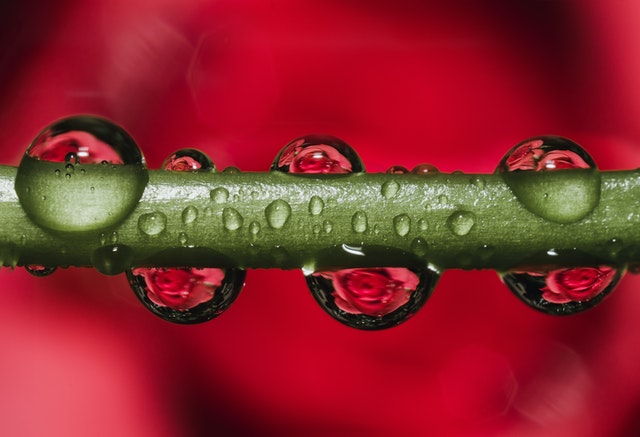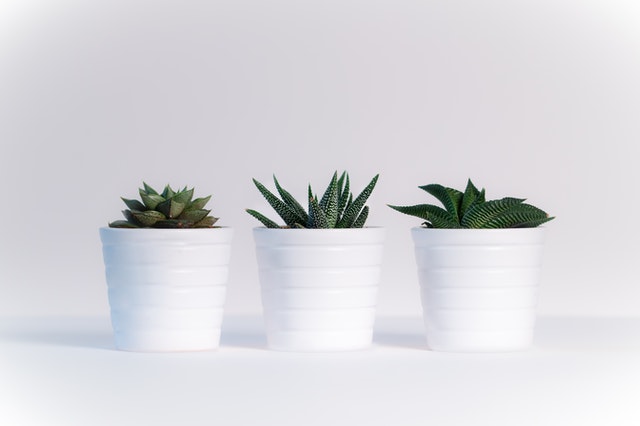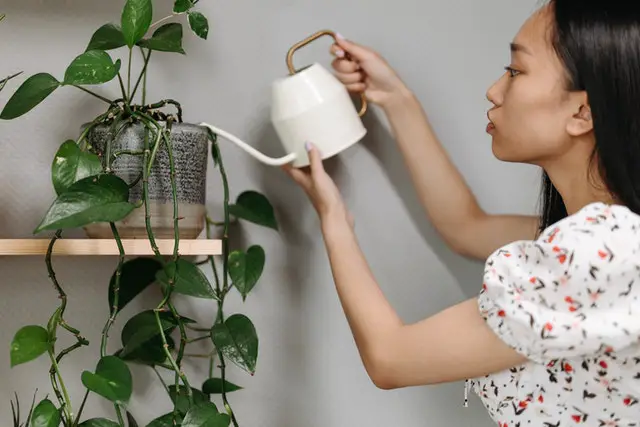Looking for a plant with a distinct look, appeal, and grace? Alocasia Infernalis is what you seek. This beautiful dark plant comes with pointed ovate foliage and a glossy feel. It’s one must-have plant for every house plant collector. In this piece, we share all you have to know about how to best care for the plant.
What is Alocasia Infernalis?
Alocasia Infernalis is a plant with many names. It’s also called Alocasia Black Panther, black magic, Viery, Kapit, or elephant ear. It’s a plant with many peculiarities. First, the plant is all black which is quite unusual as every known plant is mostly green. Secondly, it’s got egg-shaped glossy leaves.
That’s to say that its leaves are shiny and have a slippery feel when you touch them. This plant is not a good climber and they grow well in damp or temperate conditions. That’s to say, winter can affect its growth, especially when exposed to much cold.
Some of its known enemies include direct sunlight, drought, and pests like mealy bugs, mites, and spites. So, it’s in your best interest to ensure that the plant is not exposed to these enemies.
Origin and Classification
Alocasia Infernalis is of the family Araceae and order Alismatales. Its origin has been traced to Sarawak State in Malaysia.
Features
There are many interesting things to know about this plant. We summarized some of its fundamental features below:
1. Height
This plant at its maturity stage can extend up to 60cm. It spreads out well when exposed to the right soil and climatic conditions. But since it’s a slow grower, it’ll take a long while for the plant to grow tall.
2. Flowers & Leaves
Being one of the odd ones in the Araceae family, one would expect certain oddities. Its leaves are mostly dark but have an ovate shape and pointed tips. Funny enough, its black leaves produce beautiful flowers with a white or green bract.
3. Foliage and Stem

Although its stem is thin, its foliage is broad and widespread. Despite its broad leaves, it’s still a slow-growing plant.
4. Evergreen
Its leaves can stay continuously dark or dark greenish for an extended period. Since this is possible, it’s safe to say its plant can stay evergreen.
Basic Care of Alocasia Infernalis
The black magic, Alocasia infernalis is one of the plants that need extra care and attention for it to thrive and blossom. The plant has distinctive needs that if not properly attended to, will affect its growth. This guide will take you through how to care for your favorite black magic plant.
1. Size and Growth
Although Alocasiaa infernalis takes time before growing into its full height and width. It takes nothing less than two years to see your favorite black magic plant begin to blossom into its full glory. If you are a fan of watching your plant grow within months then it’s not best that you plant black magic.
This plant has over 0.4m in width and more than 0.6m in length once it reaches maturity. It will take a space of 5 to 8 years for this plant to reach its ultimate maturity. Till then, you just have to keep taking good care of the plant while it grows new leaves yearly.
2. Light Requirement
Lighting is one of the factors that determine whether a plant will grow well or not. This plant needs the correct amount of light for it to flourish. To make this plant turn out well, provide it with indirect bright light. Direct sunlight will do more harm than good as the leaves will burn, and turn crispy and brown.
Also, giving it insufficient light is also a disadvantage to the plant as the plant should not be kept in the dark corner of the house. This will make the plant start dropping and in the long run wither away. Place the plant in a spot where it will receive bright indirect light, a North-facing window is a great spot to grow this plant.
3. Water Requirement
This plant requires that it is watered correctly before it can grow well. Water it properly and ensure that 1 to 2 centimeters of the top part of the soil is completely dry before you water it again. Watering the plant once a week is sufficient for it to grow well but you have to water it less during the winter months.
Just like when you overwater this plant, root rot will set in and this happens when the root is unable to take oxygen again due to too much water and can lead to the plant’s death. Also, underwatering the plant can cause the tip of the leaves to then brownish so you have to water this plant carefully.
4. Soil Requirement

Adequate soil is essential for the plant and adding anything below the standard soil mix can be dangerous to the plant. Black magic should be planted in soil that can retain water and is well-draining. Plant in a soil mix with a mixture of peat (1:1:1), coarse potting sand, and perlite.
If you want to mix the soil at home yourself, use an already made well-draining soup with around mix. This plant can do well in any type of soil be it loamy, sandy, or any other type of soil. It is only essential that the soil you use can hold water for long.
5. Temperature and Humidity
The black magic plant is a plant that thrives on high humidity. This is because the plant can be found originally in the tropical region where the temperature is very high accompanied by humid air. The plant can do well with a humidity of 60% but it can do better if the humidity is higher.
Once there is low humidity, you begin to notice that the tip of the leaves begins to turn brown. You can make use of a spray bottle, mister, or humidifier to increase the humidity level of the plant during winter. The plant doesn’t necessarily need a humidifier during summer as the air is not too dry during this period.
The black magic plant also prefers a temperature between 65 and 75ºF (18 and 24ºC) and it enjoys indoor temperature more.
6. Drought and Disease Resistance
This plant is resistant to drought and it can thrive for a while without being watered. It is better to underwater this plant than to overwater it as overwatering can lead to rotten stems, brownish spots on the leaves, root rot also known as wilting, and yellowing lower leaves.
Drought can reduce the pace at which your plant is meant to grow but it can still stand drought instead of overwatering. This plant is not resistant to disease as both the leaves and roots can encounter one disease or another if not properly taken care of.
The leaves and cubbyholes can experience fungus gnat, mealybugs, thrips, and spider mites. The plant is also prone to botrytis, mildew and southern blight, leaf-spot disease, and rust.
7. Toxicity
As much as we love to grow our plants at home where we can access and take care of them, some plants can be harmful when ingested by animals and humans. This is the case of the magic plant as it is a toxic plant that can lead to different unpleasant situations if eaten.
The plant is toxic as a result of the different concentrations of calcium oxalate crystal which can be found in the plant’s body. If ingested, it can result in loss of appetite, nausea, and vomiting. Contact a vet if you notice that the amount ingested by your plant is much.
8. Fertilizing
Fertilizing adequately provides nutrients and food to the plant so the correct amount of fertilizer is needed for the plant to grow well. This plant doesn’t need too much fertilizer and you are advised to fertilize just at most once a month. Also, do not fertilize during the winter months as this plant doesn’t need many nutrients in that month.
9. Potting and Repotting

This plant is a plant that appreciates when it is somewhat root-bound. It is also not a plant that grows very tall as it takes time for it to grow properly so you don’t need to bother about repotting often.
Re-pot once every few years and in the spring months, once you notice the root of the plant is visible from the bottom of the pot, then it’s time to repot. You can then replant it into a bigger pot that is at least 1-inch bigger than the previous pot. Do not use an extravagant or oversized pot, a medium-sized pot is enough for this plant.
10. Pruning Requirement
One of the best ways to take care of your favorite magic plant is through pruning. This plant is a beautiful plant that performs many functions other than beautifying the home.
Since you don’t want the plant to wither away hence the need to prune. There is a need to prune this plant when you begin to notice dying or yellowish leaves.
How to Propagate Alocasia infernalis
There are three different methods that you can use to propagate your black magic plant. The best time to propagate is during spring when you want to repot the plant.
Seeds
- Buy the seed from a genuine buyer (although the seeds are very rare), get distilled water, and soak the seed in it overnight.
- Get a pot filled with a well-draining soil mix and sow the seed into the soil. Ensure they are nothing less than 1cm into the soil.
- Water the seed a little bit and cover the pot with a plastic bag to provide the seed with high humidity, then place it in indirect sunlight to keep the soil moist.
- To keep the seedling warm and increase the germination success rate, put a seed mat under the pot or container.
- Get a bigger pot and transplant once the plant is like 5cm
Offsets
- Separate the roots from the mother plant with a pruning shear or sharp knife.
- Separate baby plants that are up to 2.5cm alone. Get a well-draining soil mix and a pot then plant the plantlets
Division
- Get the plant you want to propagate and use a sharp and clean knife to split the rhizome. Make sure there are enough roots on both parts.
- Get a pot that has drainage holes, fill it up with well-draining soil, then plant the divided plant in it and watch it grow.
Common Problems In Caring for Alocasia Infernalis
The following are possible conditions that can set you back when caring for this plant?
1. Underwatering/Overwatering

As said, this plant is drought conscious. It can’t survive without water. So, not watering the plant might culminate in its gradual death. On the contrary, exposing the plant to excess water isn’t the best either. For optimum watering, water the plant when you notice some dryness in its soil or leaves.
2. Pests
While it’s pest-resistant, certain pests can reduce its lifespan. As such, the plant must be protected against pests including Mealy bugs, mites, and spites.
See a previous related post: Treubii Dark Form Plant, Grow & Care Guide 2022
Outro
There are many benefits to having this plant in your home terrarium. Aside that it’s perfect for beautification, it’s a rare plant with fascinating features.
Buying Option
Quickly order your Alocasia Infernalis at Etsy.
Frequently Asked Questions
Is Alocasia Infernalis a rare breed?
Yes! This plant is rare to find. That’s why it costs a little to get one. On Etsy, it goes for as much as $125 which is not so big or small. The plant exudes rare traits that make it worth every dime spent on buying it.
Can Alocasia produce more leaves?
Yes! It can produce more leaves if exposed to the right growing conditions. It needs enough indirect light and mild watering to do just fine. Where its growing condition is palatable, it will produce more flowers.
Is Alocasia a toxic plant?
Yes! It’s extremely toxic and not suitable to be ingested. Its flowers are infested with poisonous insoluble oxalate crystals. You’re prone to irritation, or tissue penetration when exposed to this substance. It must be kept out of the reach of your kids and pets. t

Hey, I’m Lisa and I’ve been an avid gardener for over 30 years. I love writing, talking and living in the garden! Feel free to connect with me on my socials below

